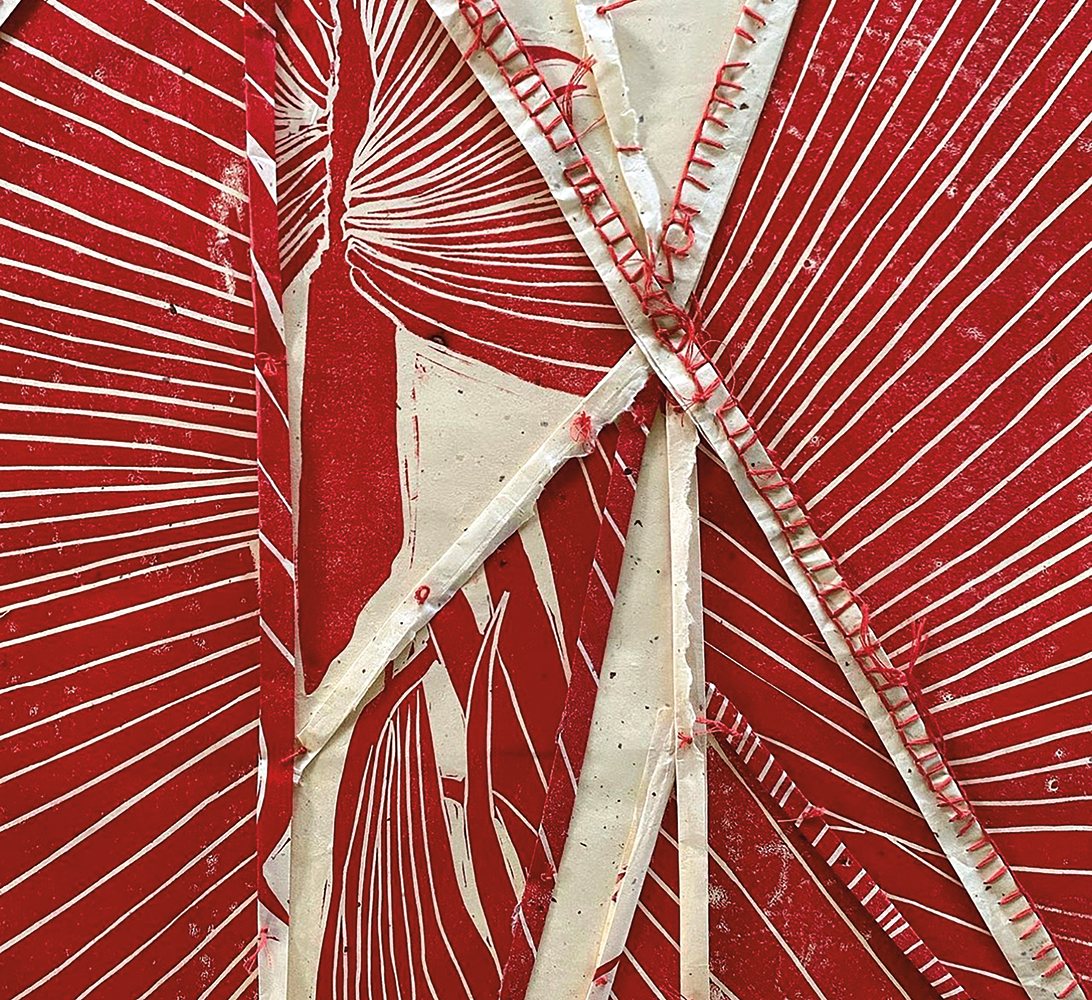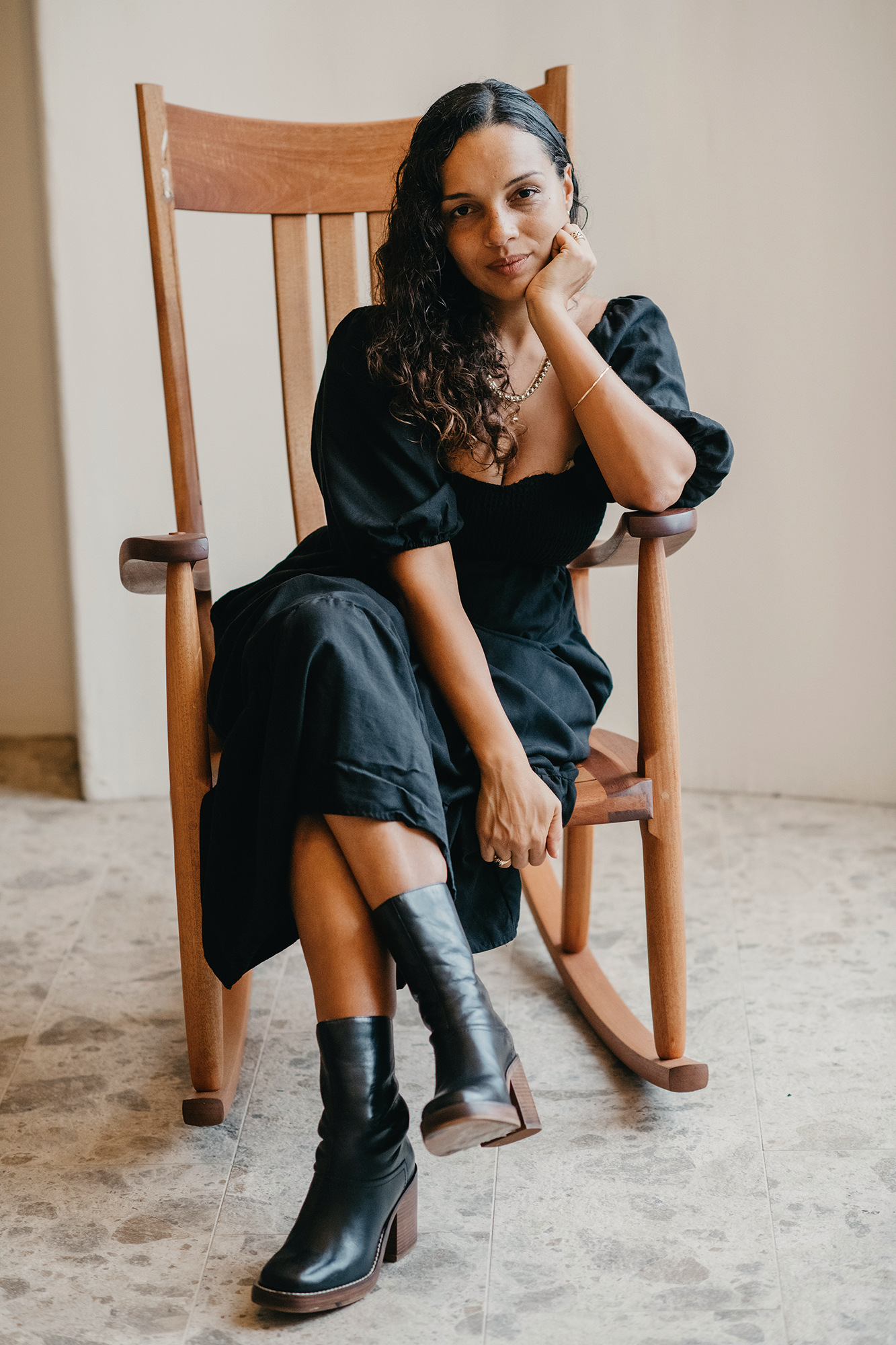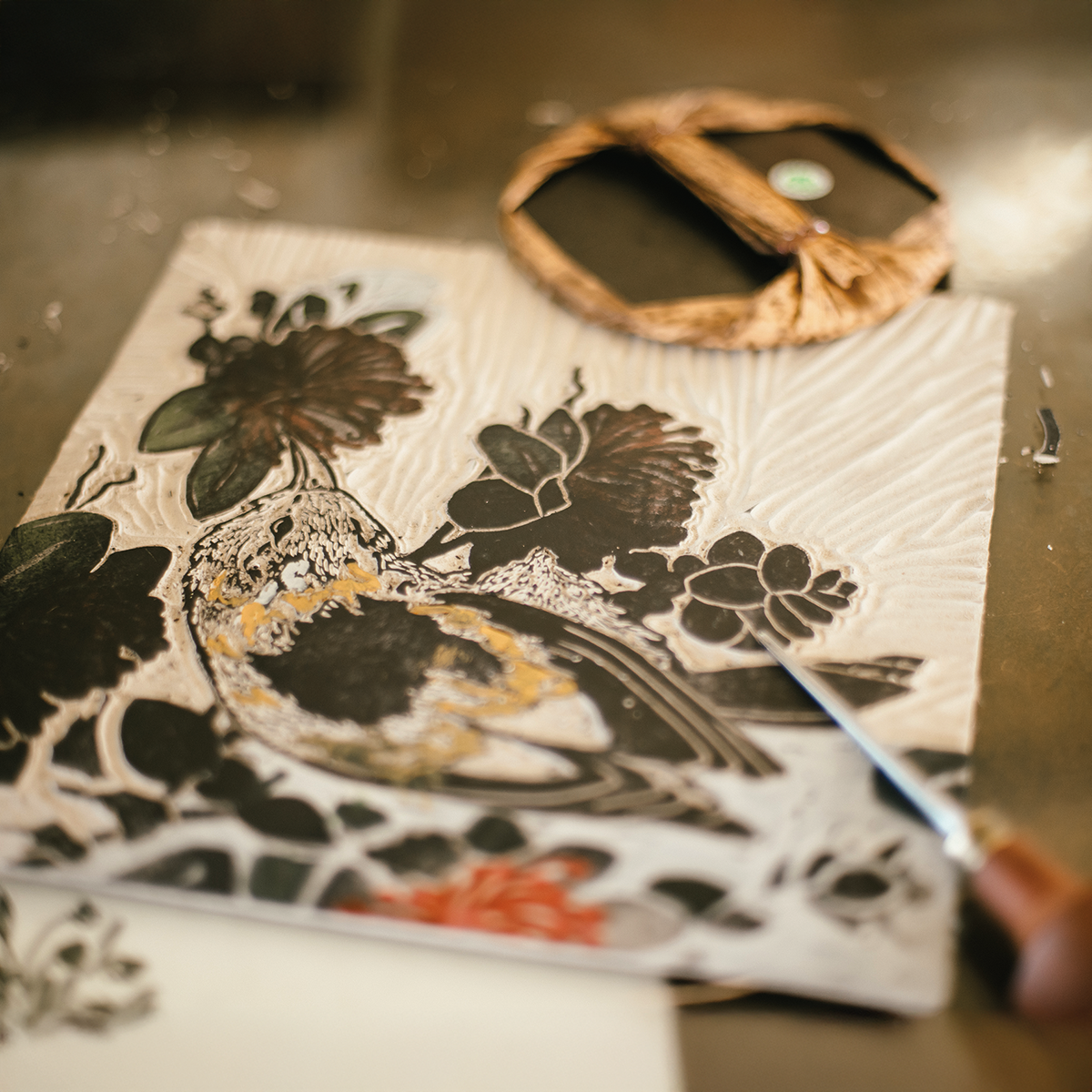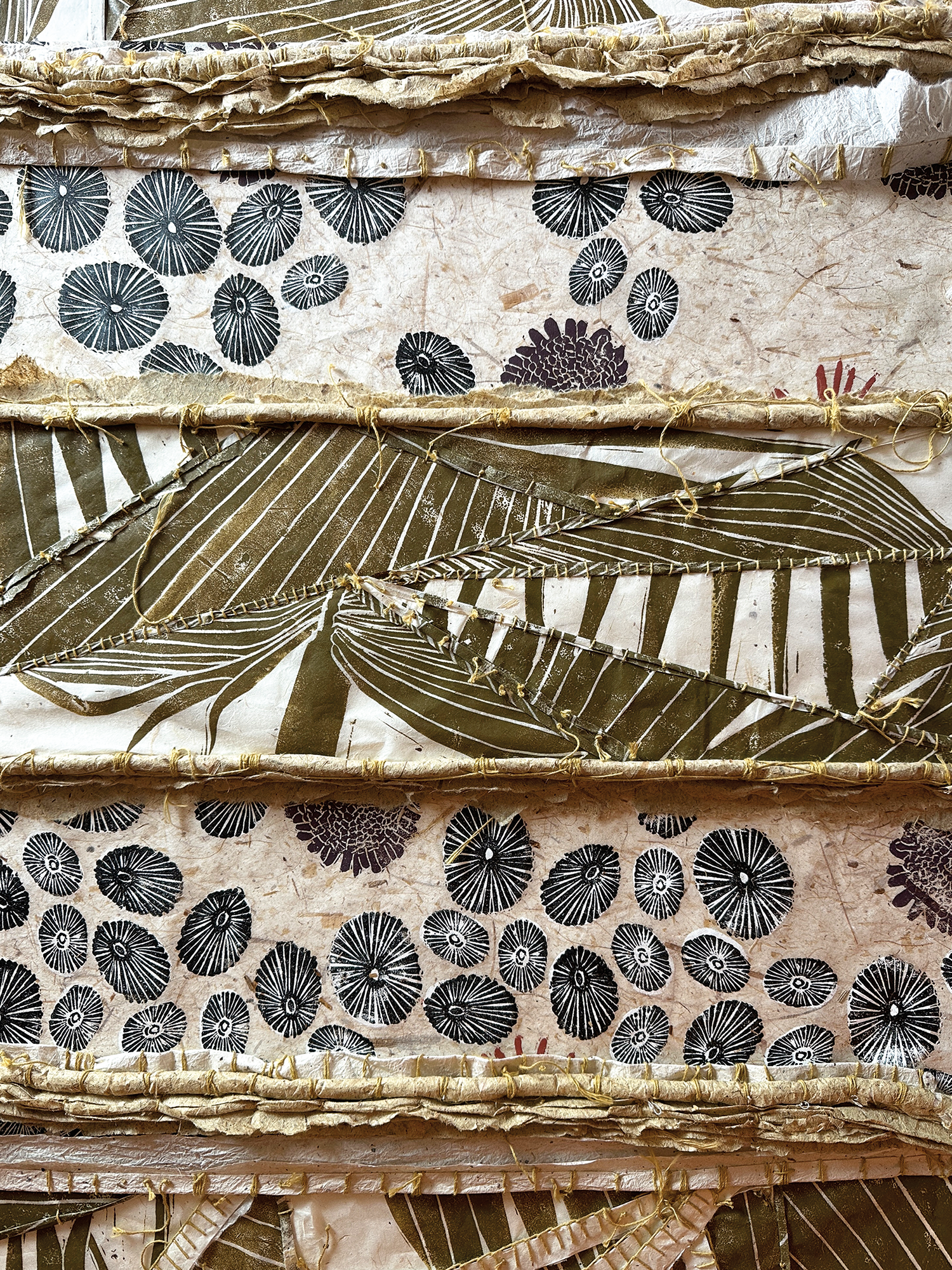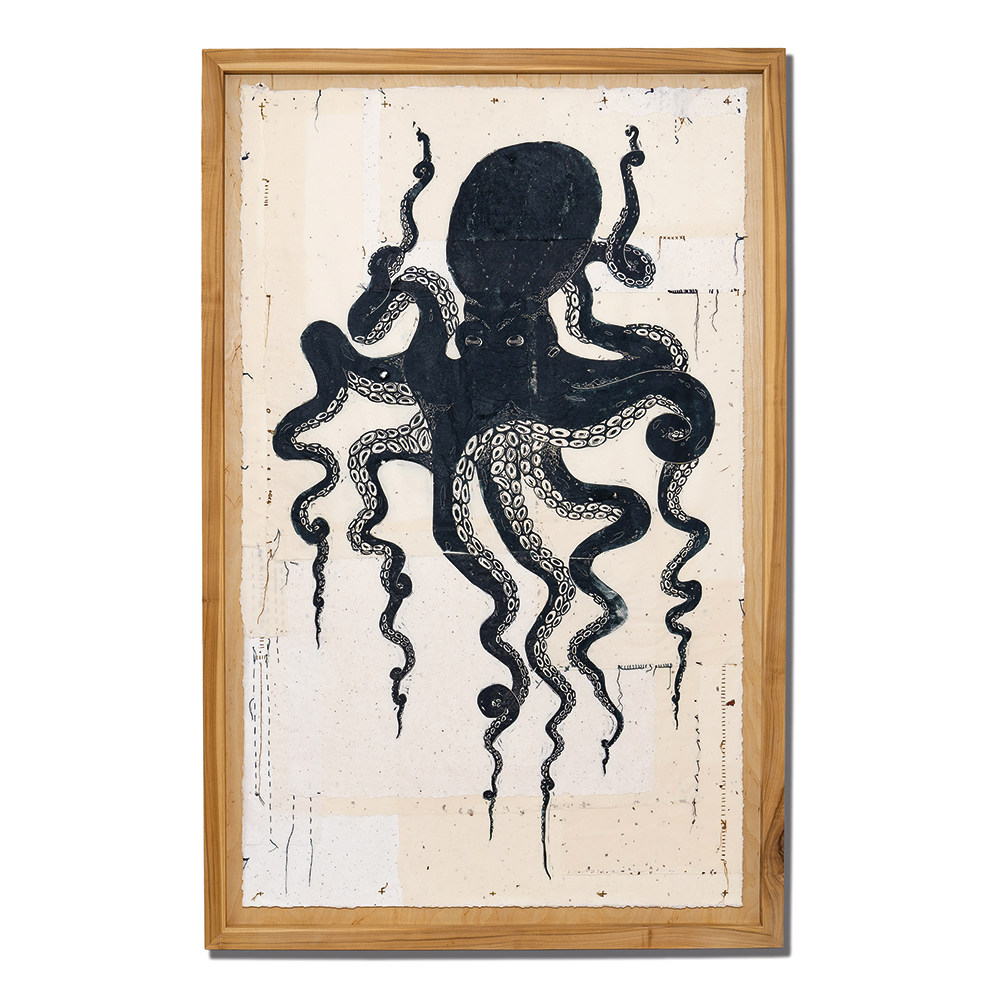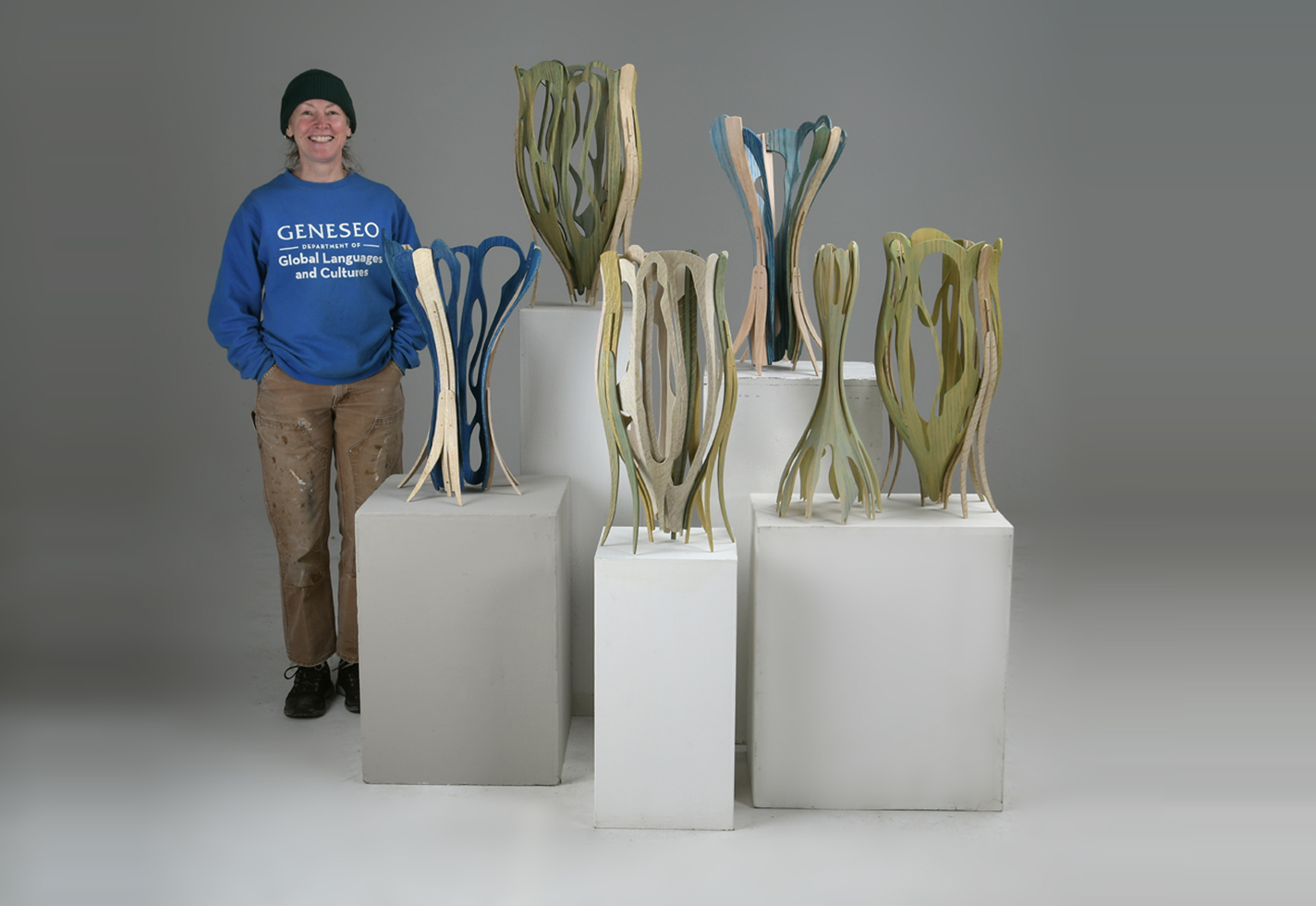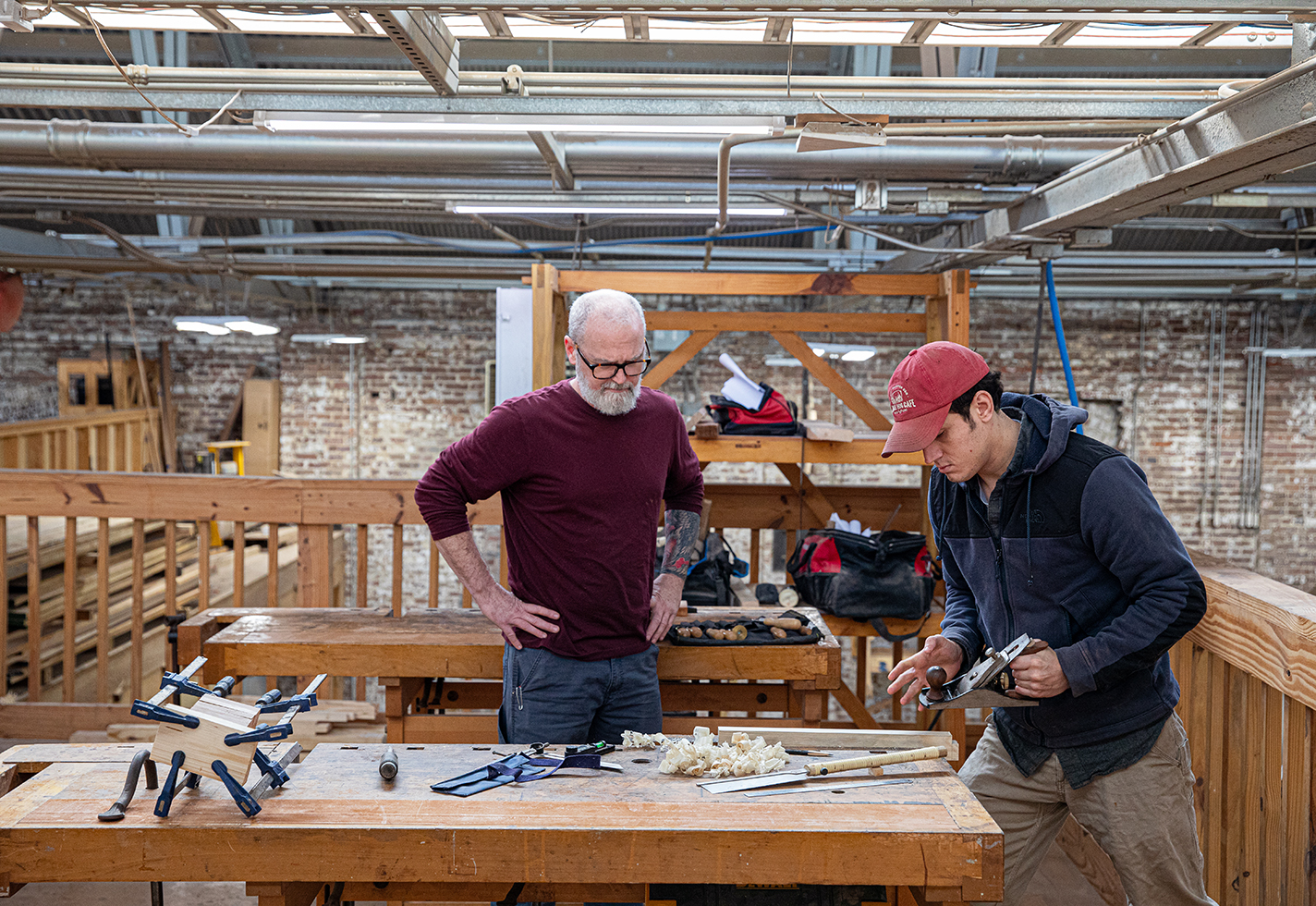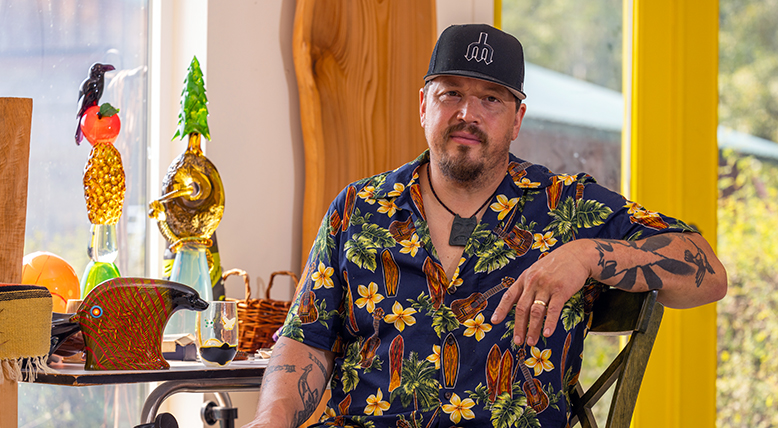Enveloped in a warm ripple of candlelight, friends gather around a dining table in an inviting Maui home. They swap stories and refill each other’s glasses. The earthy scent of fresh-brewed coffee fills the room. On the wall behind them hangs a stitched paper quilt. Its yellow, block-printed fan palms almost seem to flutter with each gale of laughter. The rich, honey tones of the print and the way the palm blades radiate recall the warmth of a sunrise. The quilt’s triangular geometry and folded edges give it the lively feel of a sail or kite.
The quilt was made for a family who had navigated grief and, in its wake, wanted to infuse their gathering space with cheer. “The title—Laughter in the Wind—came to me, knowing what they had gone through and that they needed joy in that time,” says Susanna Cromwell. “That was my prayer while I made it.” When she creates a quilt, Cromwell says, “it can’t just be a product. It has to be a prayer.”
This gentle thoughtfulness typifies the work of Cromwell, an artist whose practice includes nature illustration and watercolor painting, block printing, and paper craft. Her work has grown from block-printed cards and one-of-a-kind prints sold in Hawaiian boutiques to framed paper quilts that hang in galleries and upscale hotels, including the Four Seasons Resort Maui. Even with her increasing exposure and popularity, Cromwell views each piece as an opportunity to radiate care into the world.
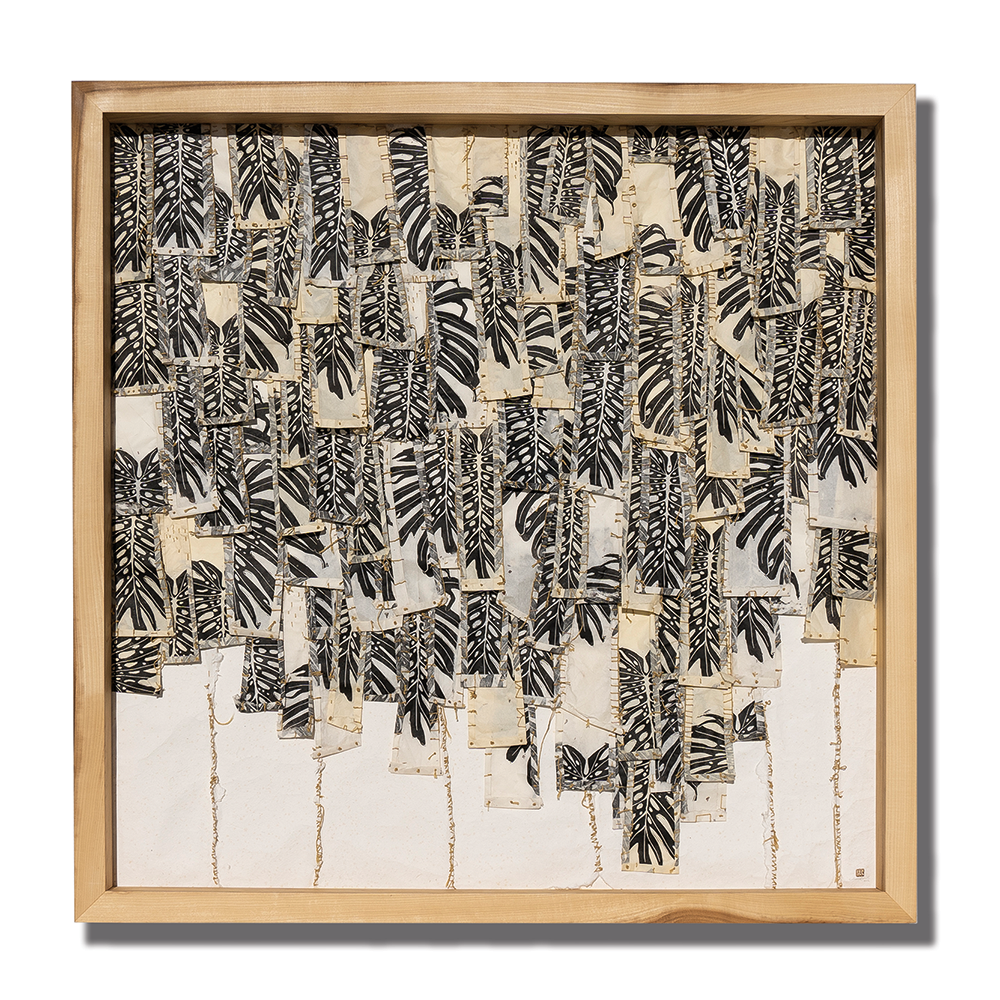
Susanna Cromwell's Majestic Takeover, a 2022 "paper quilt" with gampi and cotton rag papers, represents how monstera climbs building walls and the undercanopy of Hawaii's rainforests, 51 x 51 in.
